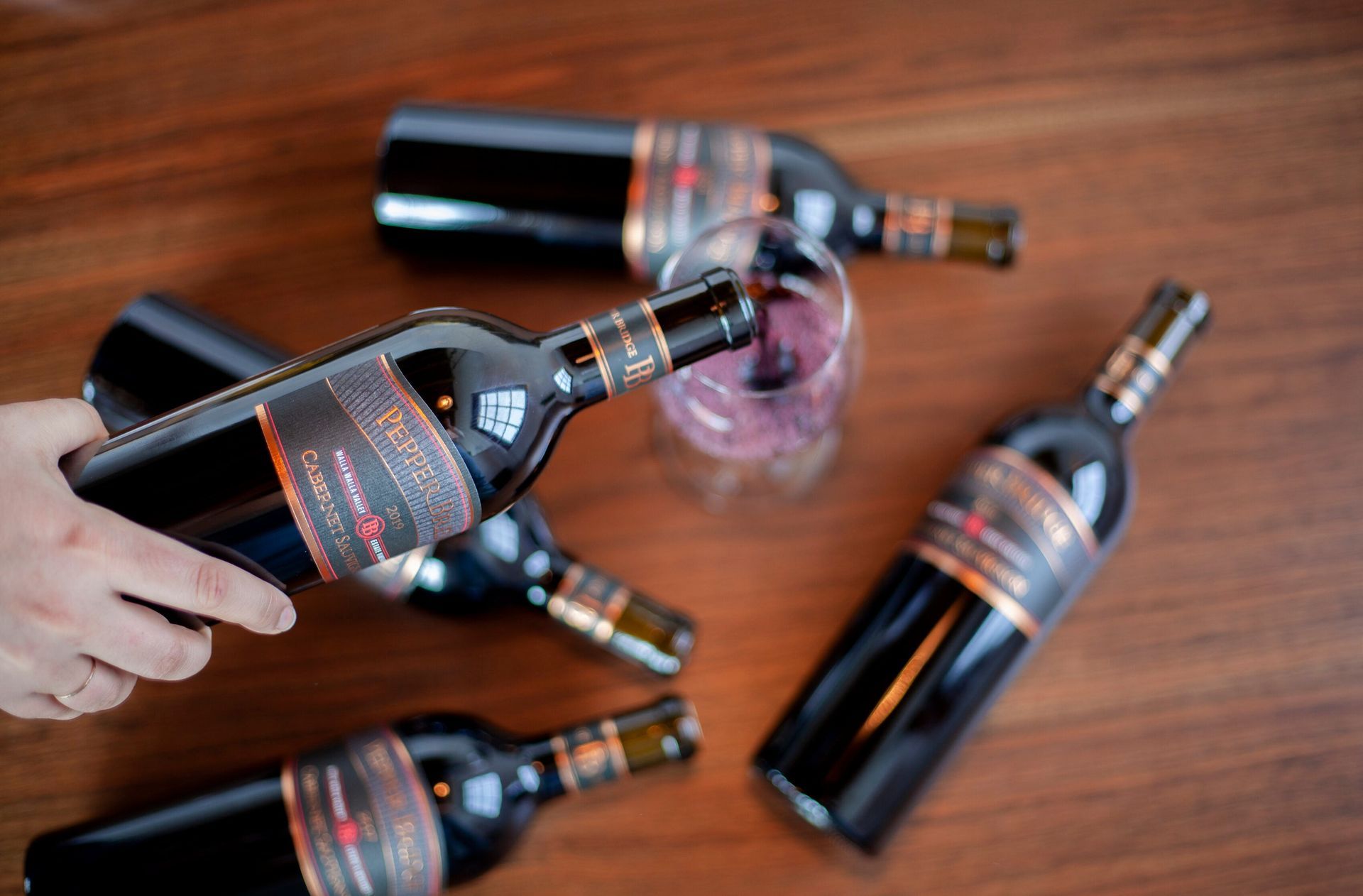
What Makes Wine Ageable?
Education
What Makes Wine Ageable?
The primary pieces in wine that make it ageable are tannin, acid, alcohol, & sugar--the two most influential being tannin & acid. Let's examine these terms. What are they, where do they come from, and how do we experience them?
Tannin
Simply put, tannin is the mouth drying component of a wine. It is an antioxidant, that protects the wine from spoiling. The majority of tannin in wines are grape skin tannins, but they are also present in stems, seeds, and oak barrels which may be incorporated to the wine's juice depending on the winemaking style. For Pepper Bridge Wines, we do not include stem and we don't crush seeds in our pressing, so our tannin is coming specifically from the grape skins and a small percentage from oak barrels.
In examining tannin from grape skin, the level of tannin is directly influenced by the sun. To compare regions, in Walla Walla we get up to 4 more hours of sunlight than the famed Napa Valley does. This translates to thicker grape skins which means, more tannin.
Acid
Acidity in wine is directly influenced by environment and development of the grapes. On the palate, it can be as smooth as milk or as sharp as a warhead candy. Young, underripe grapes have tons of acid which will diminish as they ripen over time while sweetness increases. A good rule of thumb is that grapes from cooler climates will have higher acid, where grapes from hotter climates will have lower acid--knowing about the growing season will help you understand whether or not a certain vintage is following the regional trend.
Wines from Walla Walla have amazing acidity from the diurnal flux (aka the swing from daytime temperatures to nighttime ones). We cool down each night from the Blue Mountain air rushing down the hillside chasing the sun as it sets. Higher acid makes wine more microbially stable, meaning less susceptible to turning bad, which gives it the ability to live through the years.
In a vertical of our Cabernet Sauvignon, years 2016 to 2019, we've broken down the tannin and acid by year looking at what part the weather played in creating this balance.
- 2016
- A hot start to the season built tannin; the long cool finish to harvest retained acid
- Dense tannin, bright acidity
- 2017
- Started cold but finished with a typical pick date and typical crop size
- Balanced tannin, pleasant acidity
- 2018
- The hot summer built tannins and the ideal ripening season retained acid
- Robust tannin, refreshing acidity
- 2019
- A cool start, but finished with typical summer hear that cooled quickly, building the acid profile
- Complex tannin, vibrant acidity
Taste the vertical!
For a unique tasting experience, grab some friends and open the vertical together. In tasting, we recommend you start with the oldest wine because as a wine ages the tannins smooth out. Tannin will linger on the palate, so tasting a higher tannin wine before a lower tannin wine can disrupt the flavor. Taste them all and find your favorite!
Want to learn more about aging wine? Here's some of our favorite articles on the topic:
How Do You Make a Wine for the Ages? | Wine Enthusiast Magazine (winemag.com)
We invite you to join our mailing list to stay updated on all Pepper Bridge Winery events, offers, and specials.
Contact Us
We look forward to staying connected!
Oops, there was an error getting this contact information. We would love to connect please give us a call so we can get this fixed!

